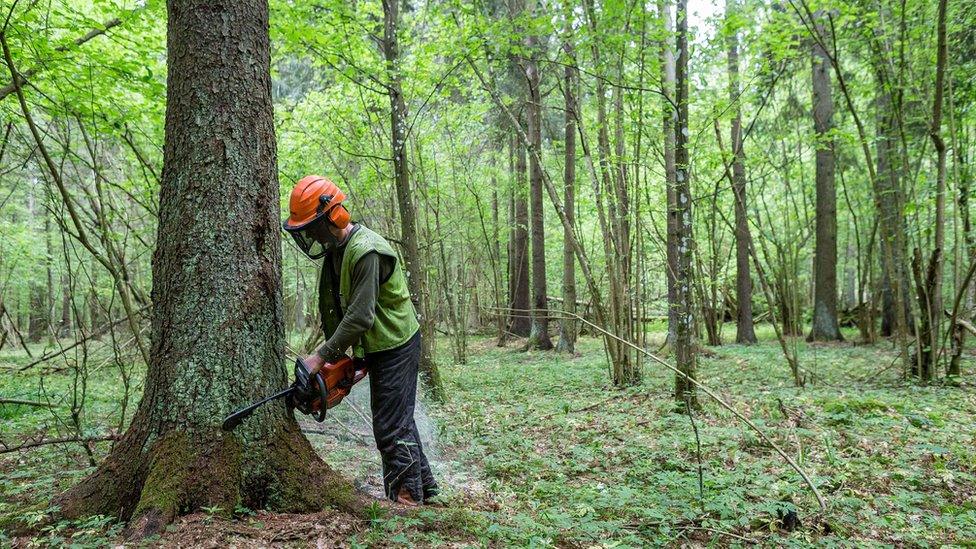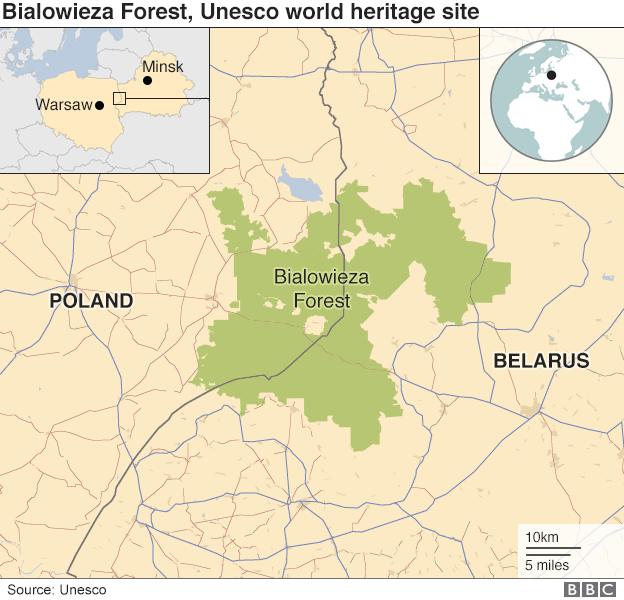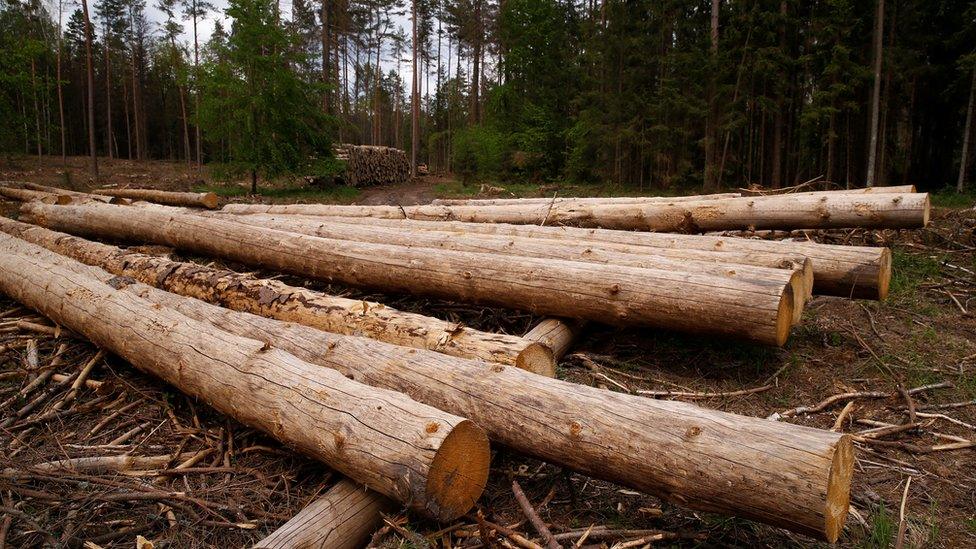Poland must end logging in Bialowieza forest, Europe's oldest, court rules
- Published

The protected Bialowieza forest is home to bison and rare birds
Europe's top court has ordered Poland to immediately stop large-scale logging in Europe's oldest forest.
Last year the Polish government approved a threefold increase in logging in the protected Bialowieza forest, home to bison and rare birds.
Unesco, EU officials and green activists protested against it.
The European Commission, which is taking legal action against Warsaw, asked the European Court of Justice to impose the provisional ban.
Environmental activist group ClientEarth welcomed the decision, saying continued logging would cause "serious and irreparable damage to this priceless natural environment".
The group's lawyer said: "In the history of the EU, emergency measures like this ban have only been used three times in nature conservation issues.
"So far there is no case in which an interim measure of the court was not respected. If Polish authorities do not follow that decision, it will be a serious conflict with the EU law."
Poland's Environment Minister Jan Szyszko says the logging could help to curb a bark beetle infestation.
The European Commission says it puts endangered species at risk.
If Poland loses the main ongoing case, it will be liable for multimillion euro fines.
The court will meet in a few months to determine whether the injunction will remain in place while the European Commission's case on the matter continues, a spokeswoman told the BBC.
The forest is a Unesco world heritage site that straddles Poland's border with Belarus.


Covers 141,885 hectares (350,606 acres) - mixed forest, but also wetlands and river valleys
17% is protected nature reserve where logging is illegal
Representative of primeval forest that covered most of Europe 10,000 years ago
Home to 59 mammal species (including European bison, lynx, wolf, otter), and more than 250 bird species
Notable for extensive dead wood - habitat for fungi, beetles and worms
- Published13 July 2017
